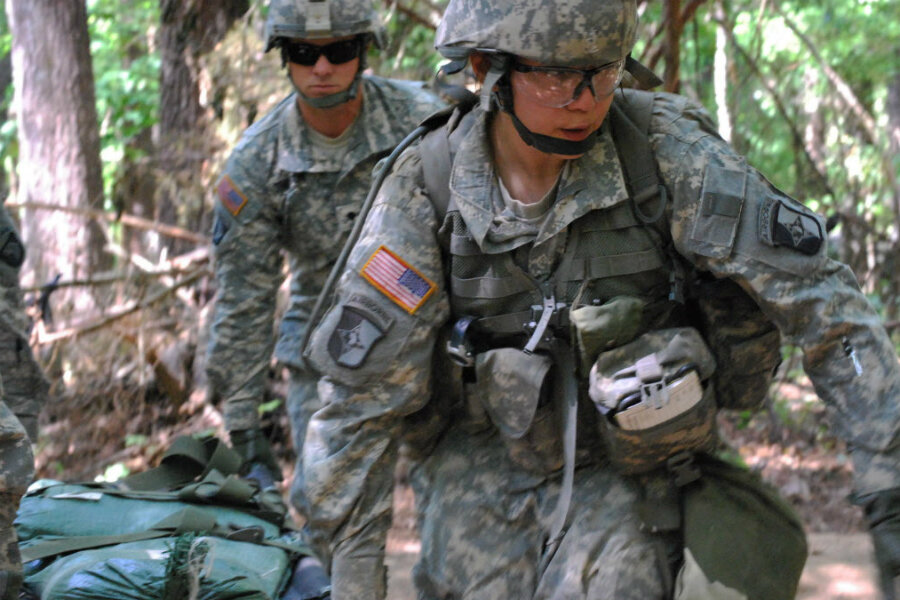With US women soon eligible for combat, the draft could be next
Loading...
| WASHINGTON
As Norway became the first NATO country to require women to register for the draft this month, it has American military analysts debating whether the US could be on the verge of taking the same step, too.
It was back in 1981 that the US Supreme Court ruled that requiring only men to register for the draft was constitutional, since there were US laws that banned women from fighting in combat.
Essentially, the argument went, since the purpose of registration for selective service – which all men must do at the age of 18, regardless of whether there is a draft in effect – is to prepare for combat, and women are excluded from combat, then they would not be needed in the event of a draft.
But with the Pentagon’s decision to lift the ban on women in combat by January 2016 – and its move in recent months to open a number of jobs to female troops previously held only by men – those Supreme Court arguments from 33 years ago may no longer apply, analysts note, adding that mandatory registration for the draft may be the next logical step.
“It’s a social contract with democracy – that’s my take on it,” says Shelly Burgoyne, a former Army officer who served two tours of duty in Iraq during the war and believes women should be required to add their names to the Selective Service registry. “If you’re going to take advantage of all of the benefits of a democracy, then I think you should also bear the responsibility as well.”
A former platoon leader running supply convoys, Ms. Burgoyne says she did not initially think that women should be allowed to serve in combat jobs and even wrote her senior thesis laying out the reasons why they shouldn’t.
Her beliefs changed, she says, after her time in Iraq. “I saw women physically able to do it,” she says. “I did a full-on reversal – if you can do the job, then you can do the job.”
A congressionally chartered association of US military reservists recently passed a resolution last year calling for the registration of women for the Selective Service as well, noting that 14 percent of active duty troops and nearly one-fifth of National Guard and Reserves are now women.
Even though 275,000 women have deployed to fight America’s recent wars, “an inequality exists between men and women between the ages of 18-26 under the Selective Service Act,” the Reserve Officers Association of the United States notes. “Women should be treated equally as responsible, competent, contributing members of America’s society.
While men are required to register for the Selective Service, there has not been a draft in the United States since the Vietnam-war era. Pentagon brass strongly believes that the current all-volunteer force performs much better than a conscripted force would. The presence of women on the rolls has the potential to make a draft even less politically palatable.
Yet there are other possibilities in the event of a national emergency in which the draft is activated, says retired Maj. Gen. Charles Dunlap, the former deputy judge advocate general of the Air Force and now the executive director of the Center on Law, Ethics and National Security at Duke University School of Law in Durham, N.C.
Congress might say, for example, that the national emergency requires 95 percent of draftees to be fighters, or infantry. A draft bill might argue that since, say, 95 percent of infantry troops are men, then the national emergency would require 95 percent of men to be called up, and 5 percent of women, Mr. Dunlap notes.
In that case, the law might say that the 5 percent requirement could be filled by female volunteers, rather than conscripts, he adds.
“There would be a relatively small number of women who would want to do it and be able to pass the test,” Dunlap argues. “Those that wanted to do it and could would be welcomed into the unit, because they would be extraordinary people,” he adds. “I don’t see thousands and thousands of women in the infantry.”







